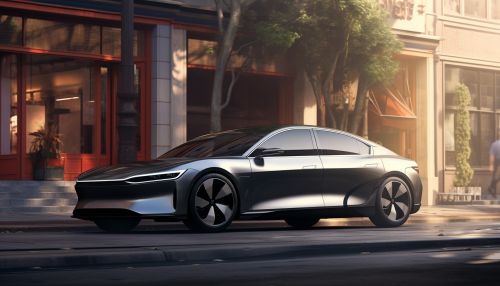Types of electric vehicles
Introduction
Electric vehicles (EVs) are vehicles that are propelled by one or more electric motors, using energy typically stored in rechargeable batteries. The concept of electric vehicles has been around for a long time, but it is only recently that technological advancements have made them a viable alternative to traditional internal combustion engine (ICE) vehicles. This article will explore the different types of electric vehicles, their characteristics, and their impact on the environment and society.
Types of Electric Vehicles
Electric vehicles can be broadly divided into three categories: Battery Electric Vehicles (BEVs), Hybrid Electric Vehicles (HEVs), and Plug-in Hybrid Electric Vehicles (PHEVs).
Battery Electric Vehicles (BEVs)


Battery Electric Vehicles (BEVs) are fully electric vehicles with rechargeable batteries and no gasoline engine. BEVs store electricity onboard with high-capacity battery packs. Their battery power is used to run the electric motor and all onboard electronics. BEVs do not emit any harmful emissions and pollutants from the tailpipe, thus they are considered zero-emission vehicles. Examples of BEVs include the Tesla Model S, Nissan Leaf, and Chevrolet Bolt EV.
Hybrid Electric Vehicles (HEVs)
Hybrid Electric Vehicles (HEVs) combine an ICE with an electric motor and a battery. In an HEV, the battery provides energy to the electric motor. At the same time, the ICE works to recharge the battery. The primary advantage of HEVs is that they provide improved fuel efficiency compared to conventional vehicles, but they cannot be plugged in to recharge the battery; instead, the battery is charged through regenerative braking and by the ICE. Examples of HEVs include the Toyota Prius and Honda Insight.
Plug-in Hybrid Electric Vehicles (PHEVs)
Plug-in Hybrid Electric Vehicles (PHEVs) are a type of hybrid vehicle that can be plugged in to an external source of power to recharge the batteries, as well as being charged by its onboard gasoline engine. This allows PHEVs to drive extended distances using just electricity. When the battery is depleted, the vehicle can continue to drive using power from its gasoline engine. Examples of PHEVs include the Chevrolet Volt and Ford Fusion Energi.
Charging Infrastructure
The availability and accessibility of charging infrastructure is a critical aspect of electric vehicle adoption. There are three main types of charging infrastructure: Level 1, Level 2, and DC Fast Charging.
Level 1 Charging
Level 1 charging is the slowest form of charging and typically uses a 120-volt AC plug. This type of charging is best suited for residential settings, where vehicles are parked for extended periods.
Level 2 Charging
Level 2 charging uses a 240-volt AC plug and requires installation of additional charging equipment. It is commonly found in residential, commercial, and public settings. Level 2 chargers can typically provide 10 to 60 miles of range per hour of charging.
DC Fast Charging
DC Fast Charging stations are the fastest type of charger available and can provide 60 to 100 miles of range in just 20 minutes of charging. These stations are typically located along major highways and in commercial areas.
Environmental Impact
Electric vehicles have a significant potential to reduce greenhouse gas emissions. This is because electric vehicles are more efficient than conventional vehicles and because they can be powered by renewable energy sources. However, the environmental impact of electric vehicles also depends on the source of the electricity used to charge them and the manufacturing process of the vehicles and their batteries.
